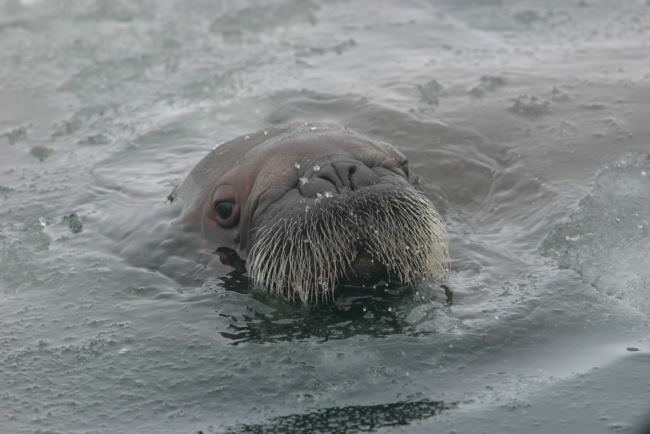
The Pacific walrus won’t be protected under the Endangered Species Act. The U.S. Fish and Wildlife Service announced Wednesday that the “species has demonstrated an ability to adapt to changing conditions.” The announcement angered the environmental group that petitioned the agency to protect the walrus, but a number of Alaska groups were pleased with the decision.
Shaye Wolf from the Center for Biological Diversity says she’s been glued to her computer this week, waiting to hear about the protection status for the Pacific walrus.
Her organization, which is an environmental nonprofit, petitioned for more federal protections for walrus back in 2008 — the same year the polar bear was added as a threatened species under the Endangered Species Act.
She says hearing the news that the marine mammal wouldn’t receive the same protections was alarming.
“This read exactly like a political decision,” Wolf said. “If the Fish & Wildlife Service had protected the Pacific walrus because of threats of climate change, the Trump administration would have to admit that climate change is real and it’s causing real world harms.”
Wolf says there’s evidence from government scientists to suggest the walrus population will decline.
As Arctic sea ice has diminished, more female walrus have been forced to come onshore in the summer. It’s become a yearly occurrence in late summer to see tens of thousands crowding on the beach at Point Lay — a village along the coast of the Chukchi sea. This year was the earliest haulout on record since the walrus first started appearing in 2007.
Still, Patrick Lemons, a marine biologist with the U.S. Fish & Wildlife Service, says the decision not to the list the Pacific walrus isn’t political. He says the federal agency acknowledges “environmental change” is happening.
“The decision was based on the best available science and that was the recommendation that came out of the region,” Lemons said. “I don’t think it would have changed under either administration.”
Walrus use sea ice as a kind of floating platform. It gets them out to rich foraging spots and provides an important place to nurse their young or rest.
Lemons says scientists started to see a rapid population decline in 1980s, as sea ice disappeared.
But, recently, Pacific walrus have been observed making long trips offshore for food.
“That suggests that some of our assumptions before, where we didn’t have any certainty about how walruses would react, now we actually have some information about how walruses would react,” Lemons said. “Now, we actually have some information that walruses can change their behaviors as sea ice declines.”
Lemons says stampedes, which were thought to be a big threat onshore, aren’t killing as many of the animals as expected. Overall, he says, the population appears stable.
That was good news for Vera Metcalf, the director of the Eskimo Walrus Commission, who lives in Nome. An Endangered Species listing wouldn’t have impacted subsistence harvest of walrus. But Metcalf says it confirms what the community already knows.
“I think we’re all relieved, and we’re going to work on a common vision to move forward,” Metcalf said.
Several state agencies in Alaska, including the governor, have also released statements applauding the decision not to list the Pacific walrus. Congressman Don Young said he was glad the federal agency ignored “the extreme political pressures” to add a new listing.
The Center for Biological Diversity says it plans to appeal the decision.
